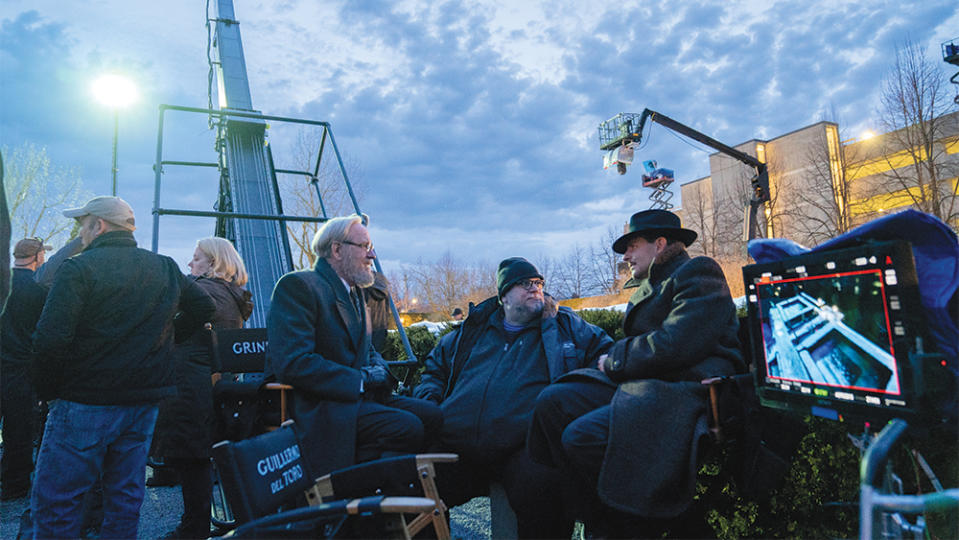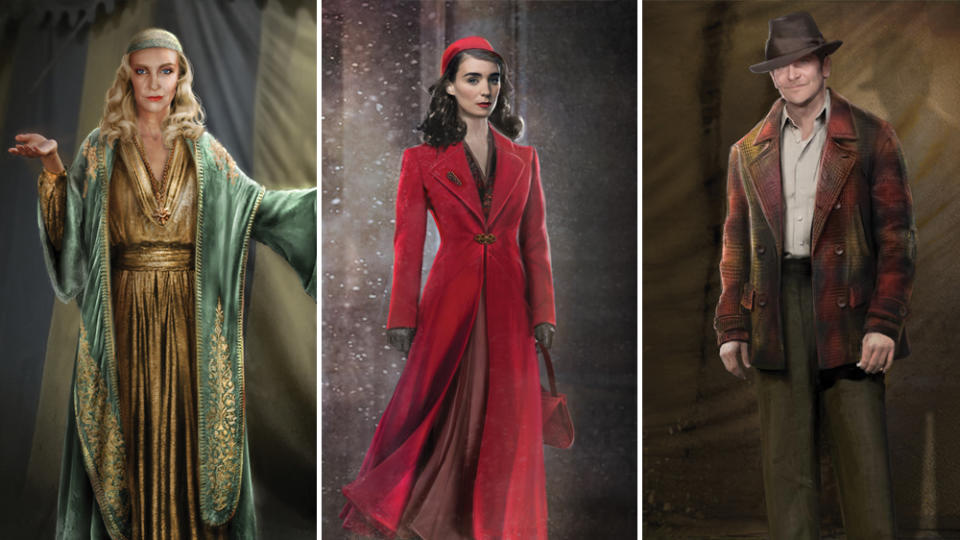Guillermo del Toro on the Crafts of ‘Nightmare Alley’

SPOILER ALERT: This piece contains spoilers for Guillermo del Toro’s “Nightmare Alley”
Guillermo del Toro’s “Nightmare Alley” is physically stunning, which the director says “sustains the darkness of the movie by keeping the audience almost hypnotized by those textures. If you make a beautiful movie that’s not telling a story or defining a character, it’s just decorative. That’s the difference between eye protein and eye candy.”
Every worker behind the camera on the Searchlight film was “first-rate,” says del Toro, who also singled out several key artisans. “We basically made two films,” he adds. “The carnival is full of steam, rain, mud and reds; the second half is sterile and cold, in the snow, full of metal, glass and straight lines.”
More from Variety
Guillermo del Toro's Stop-Motion 'Pinocchio' Brings the Fabled Puppet to Life in New Trailer
Annecy Prizes: 'Little Nicholas,' 'No Dogs or Italians Allowed' Win Big at Animation Fest
Tamara Deverell
Production design
“We had a long period of preproduction. Tamara quickly identified the carnival as the hardest thing to do. You are dealing with an extremely complicated set that is going to work as exteriors and interiors. We did an almost military operation of engineering, transforming the ground to carry water, electricity and steam, because I wanted to have steam rising the whole time. Every office in the city is designed like an alley. Lilith’s [Cate Blanchett] office is an alley, and everything is behind secret panels — the recording tapes, the safe, the exit — they’re all concealed, like Lilith hiding secrets.”
SPOILER ALERT
“After the scene in Grindel’s garden, we made the car, the entire car, that runs over Grindel’s bodyguard, Anderson. We made it full size, in polyurethane rubber, so we could run him over. And when you see him dragged, he was really being dragged on a pulley system.
“Also, the movie is full of circles, which symbolize the geek pit that is chasing Stan. The cabaret is a circle, his rehearsal room, Grindel’s office; the ending has a big circular window. And what we did with Tim Blake Nelson (as a carnival operator) in the final scene, the whole movie is there: He’s wearing the sheriff’s St. Christopher medal, he has Stan’s radio, there is the red from the funhouse, he has the baby in the jar. There are a lot of little details that make Stan come full circle.”
Courtesy of 20th Century Studios/Kerry Hayes
Dan Laustsen
Cinematography
“The camera never stops moving in the movie. There’s not a single static shot. I wanted the camera to remain curious. When Lilith comes in, the elegance and the camera’s velvety moves come in with her. At the carnival, photographing rain, you have to backlight it, and since it’s a moving camera, we positioned large light cranes on both ends of the carnival. The carnival feels quite different from the city. We wanted to change the feeling, to track the evolution of the character: The first half is liquid water — rain — and the second half is frozen water, which is snow.”
Courtesy of Searchlight
Luis Sequeira
Costume design
“Bradley Cooper’s clothes [were] old and raggedy in the beginning. As he becomes Stanton in the city, we needed to give him immaculate suits, but with really bad ties, so the audience says, ‘This is still the same guy.’ Lilith needs to be contained by her clothes, to be almost a silhouette in that space that is her office. In costumes, there is a lost art: Only one or two places in the world still make great hats. And to find hundreds of great hats, Luis went on a hunting trip. He also found authentic clothes, to the point certain extras couldn’t be in rain because the fabric would come apart: They were wearing real shirts from 1936.
“Luis and I talked about how each character would be defined by wardrobe. Zeena needed to be in flowing robes in green and gold; she is motherly, earthly. Clem (Willem Dafoe) is in browns and leather. In the city, Stanton needs to have an immaculate suit every time. One of the hardest things with men’s suit: You have to find the perfect pattern for the shape of the actor, and we needed a period pattern and cut it to perfection. Red is an important color in the movie and we extracted it out of the second half. The only element we would keep red from beginning to end was Molly. She needed to be the only red in the second half, except for Lilith’s lips, blood, and the Salvation Army sign. Other than that, Molly is the only red. And her costumes also needed a certain modesty, meaning she didn’t buy into the luxury that Stan wanted. “
Cam McLauchlin
Editor
“Two of the hardest things to find in the editing room are the rhythm of the whole movie and the internal rhythm of every scene. We made the movie like a ramp that starts slow and gains speed, and we constructed the last 30 minutes in a faster rhythm. Everything has to lead to the ending. I think the hardest sequence was Grindle’s garden — the hardest to shoot and to edit. In editing those moments, you need the right measure of shock and dread, but you have to calibrate it very precisely.
“The first cut of the movie was three hours and 20, and we ended up at 2:19. So to subtract an hour, that made the exercise really complex. Cam rose to the challenge beautifully. This is my first movie with him as sole editor; he has a very strong point of view and the patience of Job.”
Nathan Johnson
Composer
“Nathan said, ‘I’d love to use four notes to represent Stan,’ because he’s such an empty man that it should be simple, and then build upon them until there’s a full symphony in the city. And at the end, the last four notes you hear are those same four notes. I thought that was a really interesting notion. I liked that in discussing the score, Nathan was discussing story and characters, not the style or the sound.
“The first time Stan comes close to Molly is on the carousel. I said to Nathan don’t give me a love theme, give me a hope theme. We called that theme Hope for the Future. Stan never falls in love with one woman, he falls in love with the idea. Nathan and I agreed: By no means should we have carnival music and by no means a noir score. Avoid those two things. But bring the horns and winds with Lilith. Save those instruments until Lilith.”
Best of Variety
From 'The Sandman' to 'Blonde': Books Made Into Movies and TV Series That You Should Read
Jennette McCurdy's Provocative Book 'I'm Glad My Mom Died' Is Already a No. 1 Bestseller
Sign up for Variety’s Newsletter. For the latest news, follow us on Facebook, Twitter, and Instagram.

 Yahoo News
Yahoo News 

